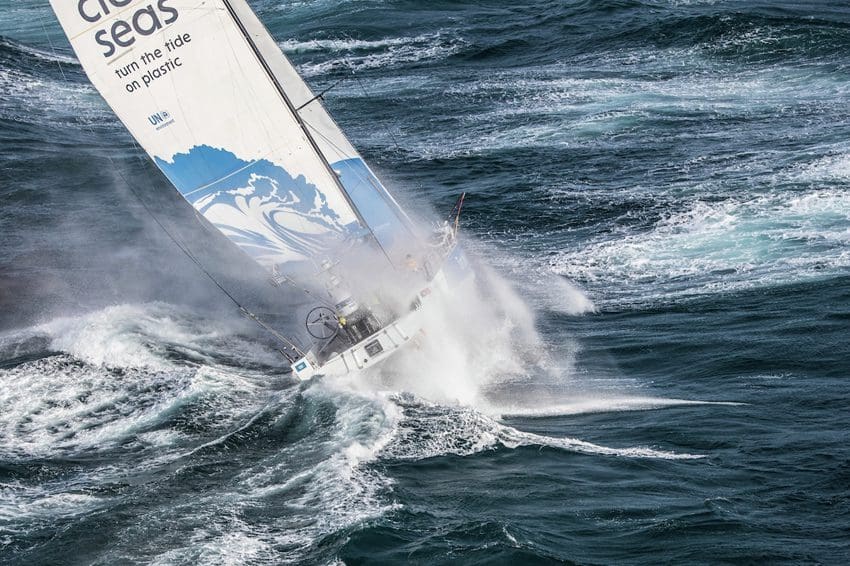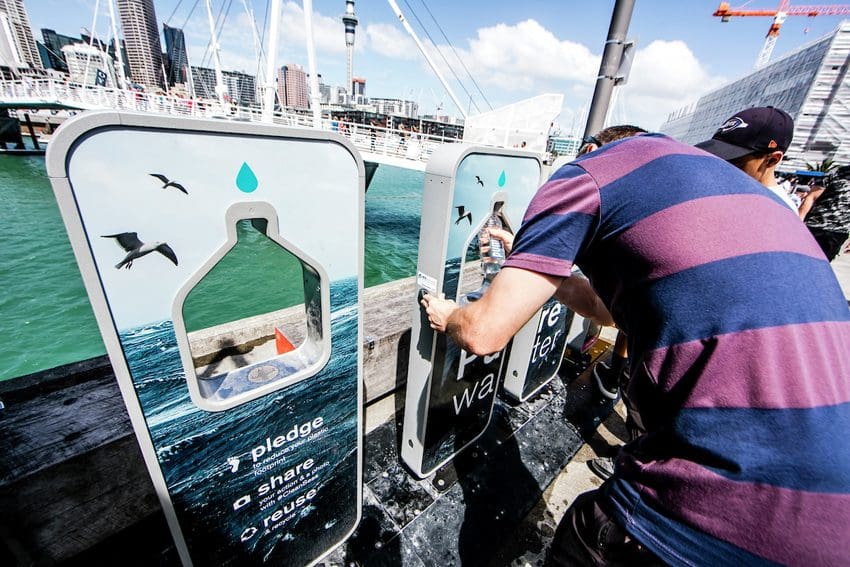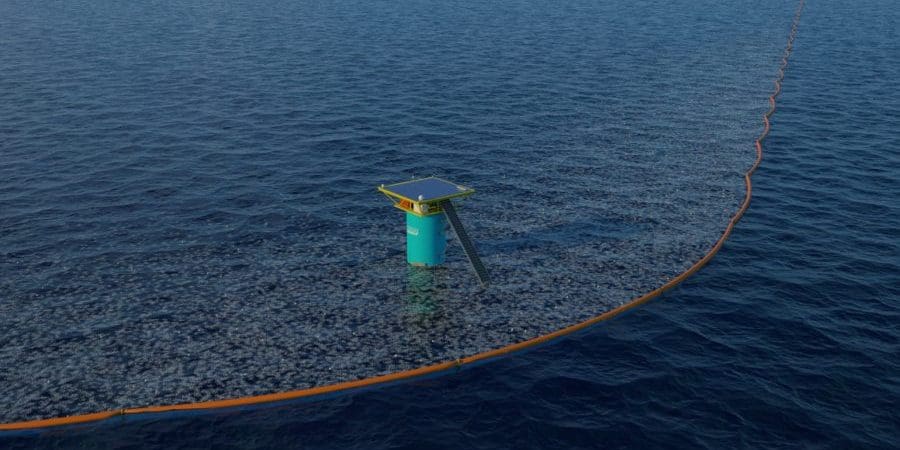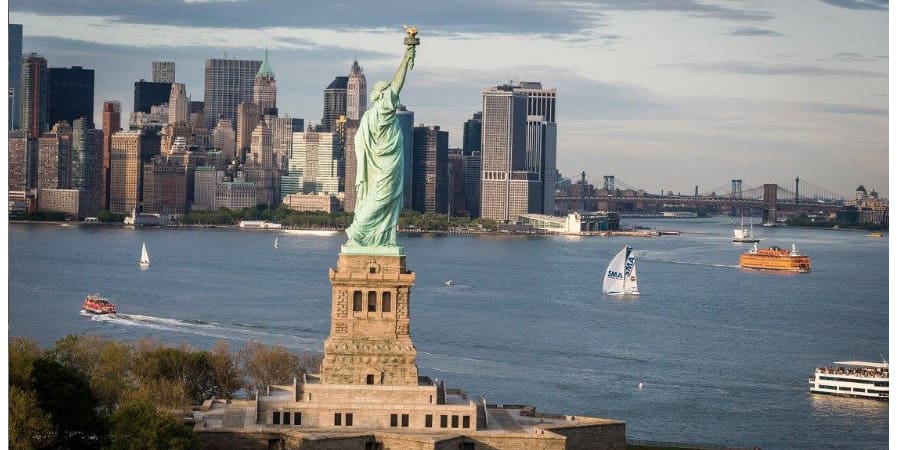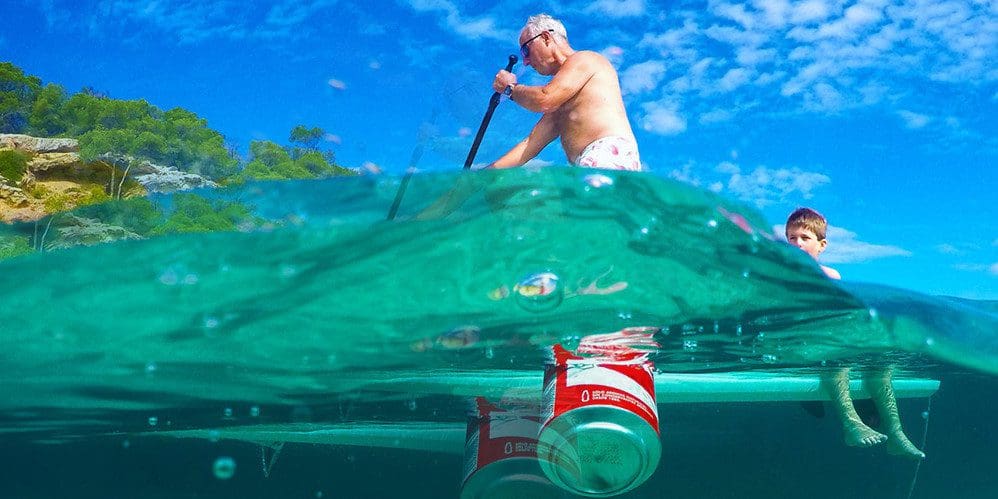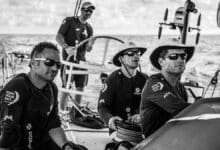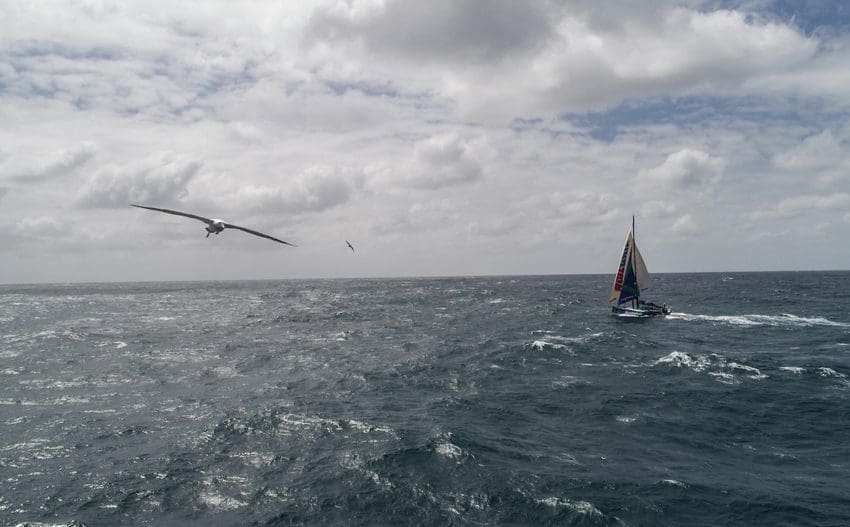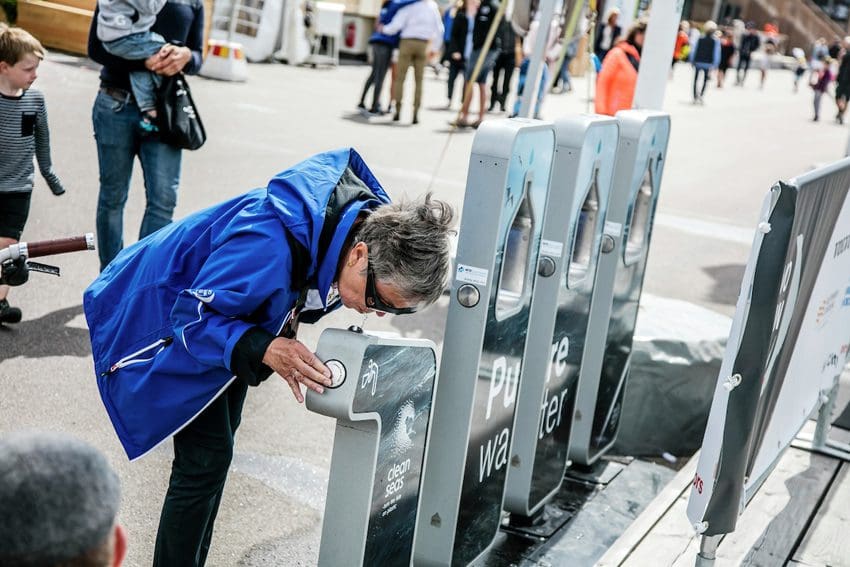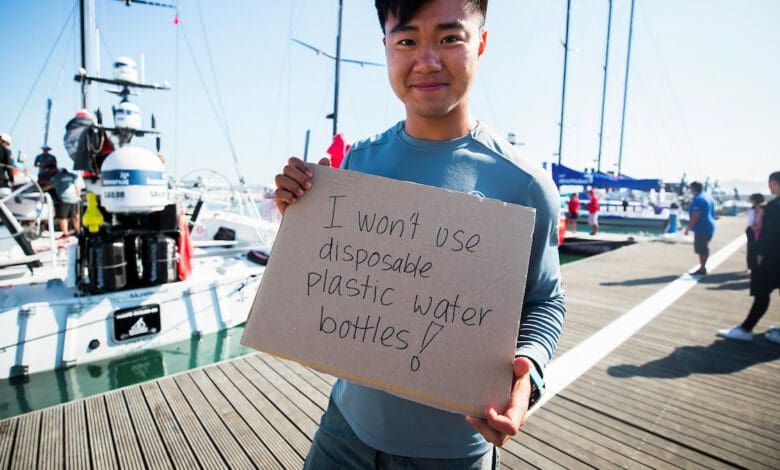
In this article, IMOCA and The Ocean Race get the low-down on a crewed round-the-world race that has been a genuine technological laboratory, from the first edition in 1973-74 to the most recent in 2017-18. Though IMOCAs have attained an exceptional level of performance, sustainable development and the protection of ocean health have become central to The Ocean Race, and to its various protagonists. Indeed, in celebration of World Oceans Day on 8 June, and as a sign of IMOCA’s commitment, the class is organising this week a series of workshops in Les Sables d’Olonne before the start of the Vendée Arctique around the theme of managing resources and waste in boatyards, as well as the use of alternative construction materials.
New era, new practices
In September 1973, when 19 yachts headed off into the unknown from Portsmouth for the first crewed round-the-world race, nobody suspected that the Whitbread Round the World Race would go on to become an essential event on an international scale. It would span 13 editions, through until The Ocean Race, which will be contested for the first time in early 2023 in IMOCAs, in crewed configuration. There is no one better placed than these offshore racers to observe the sea night and day.
In the early years, though, sailors who were concerned about the pollution of the oceans were few and far between. Global warming was not yet a major concern and selective sorting of waste was a long way off.
Aboard a race boat, people didn’t think twice about throwing all kinds of waste over the side. During the first Vendée Globe in 1989-90, for example, Titouan Lamazou, the race winner, was quick to offload his rubbish on the return leg up the South Atlantic. Not only did he make no bones about this during the radio link-ups, he also detailed it in his book after the Vendée Globe 1989-90: “One night, I changed headsails and ditched the old ones in the sea,” he wrote.
Lamazou: “I know the public found it shocking…”
“All my fleece clothing went over the side too,” Lamazou added. When his shore crew suggested that he also dump the diesel out of his main tank, the former disciple of Eric Tabarly replied: “it’s maybe not worth polluting the ocean straightaway” Later on, he admitted: “I know that the general public found it shocking that I was tossing so much gear into the water. The average sailor, who buys a boat on credit and finds it hard to kit it out, cannot possibly get their head around why I’m flinging away 10 autopilots. I had three full sets of sails at the start. I didn’t keep a single spare and I threw away a bunch of incredible ropes… all I kept was the freeze-dried food. All the tins went to the bottom.”
Imagine the outcry such remarks would cause on today’s social networks. A few years later, a young racer who signed up for the Jules Verne Trophy with Olivier de Kersauson, and went on to win the Volvo Ocean Race with Franck Cammas, felt uncomfortable seeing all the rubbish being systematically thrown into the sea. Thomas Coville made his views known to his skipper who responded: “If you want to keep the bins on board, you can stow them away in your bunk.”
The sailors have first contact with the impact of pollution
Today, the behaviour of sailors is poles apart from those relatively early days and there has been a shift in mentalities. The Ocean Race is a pioneer and is highly committed to the fight to combat pollution. “Sailors have first contact with the impact of pollution and climate change,” explains Anne-Cécile Turner, Sustainability Director for The Ocean Race and someone who has been instrumental in highlighting these issues for over 15 years. “We need to develop a better understanding of the importance of our oceans, not just for sailing, but for the regulation of the climate, food and the jobs associated with them. We’ll make the most of the platform the ocean gives us by raising awareness about the threats looming over it and the vital role it plays in life, thanks to a major campaign geared around supporting ocean rights. Our goal is both ambitious and exciting and revolves around supporting the creation of a Universal Declaration of Ocean Rights by 2030. We believe that the support of populations right around the globe could help make this possible.”
This awareness is an absolute no-brainer. “We’ve created a kind of road map to inspire change and generate positive and tangible impact,” adds Turner, “whether it relates to logistics, materials, waste or the race village. During the last edition, in addition to the presence of the Turn the Tide on Plastic boat, designed to raise awareness about plastic pollution, The Ocean Race reduced the consumption of plastic bottles by 388,000. And for the next edition, the stated objective is zero bottles. We also have a scientific programme,” she continued. “Some of the VO65s and IMOCAs will be supplied with an ‘ocean pack’ to assess the health of the ocean, in terms of its concentration of microplastics, carbon dioxide, acidity, water temperature and so on…in a bid to have a snapshot of the situation and the ocean’s condition.” This tool has been developed to make it more lightweight, less energy-intensive and less onerous in terms of performance. Finally, the race stopovers will also be an opportunity to showcase an educational pack translated into 8 languages, which will now be distributed to sailing schools right around the globe via the international federation, World Sailing.
IMOCA votes in some new rules
In consultation with naval architects, sailors and teams, IMOCA has thought long and hard about the new 2021-25 rule, the idea being to champion such innovations as the use of bio-sourced materials for a boat’s non-structural and removable elements – for example the chart table, seating and pipe cots. These are not included in a boat’s measurement weight within a 100-kilo limit, as was already the case for the solar panels, green energy systems and scientific measuring instruments. A current IMOCA is able to sail around the world while remaining virtually self-sufficient thanks to hydro-generators and energy supplied by the sun and wind; the diesel engine remaining sealed in position solely for safety reasons. Another notable development is that the teams must carry out a life-cycle assessment (LCA) for any new builds, the aim being to amass comparable data in order to better understand the impact and decide what can be improved on to reduce its carbon footprint. Finally, the rules also affect the build process, with a limited number of core materials such as the mass of Nomex and carbon per unit area, and a reduction in production time and costs.
Paul Meilhat: “we’re trying to be ‘economical’ with regards the carbon footprint and the LCA”
The winner of the last Route du Rhum-Destination Guadeloupe in the IMOCA category has a new Verdier design currently in build. “I love crewed and close-contact racing and I’ve always dreamed of competing in The Ocean Race,” says Frenchman Paul Meilhat. “We’re using the moulds from LinkedOut 1, which means we’re not just saving time and money, but we’re also being ‘economical’ with regards the carbon footprint and LCA,” explains the sailor, who is renowned for his ecological convictions. In fact, it’s thanks to his efforts to preserve the ocean that he secured his partner Biotherm.
“We first met in 2019, whilst collecting plastic on the beaches. I was a Surfrider Foundation ambassador for 12 years and Biotherm became one of the sponsors at that time. Two years later, the boss called me up to tell me they wanted to do The Ocean Race 2022-23, followed by the Vendée Globe 2024. The planets were in alignment. On top of that, Biotherm is the showcase brand for sustainable development within the group and its products are plankton-based. I’m very fortunate to combine both my passions: to sail and continue to take action to protect the oceans. We’re forming a major scientific partnership with the schooner Tara, with sensors to study the microbiome, a kind of interface between the water and the air, which is also a little reminiscent of what today’s IMOCAs are like.”
Though racing boats and sailors are setting an example and enjoy positive press with the general public, the ecological challenges primarily relate to oil tankers, cargo ships, superyachts, ocean liners and ferries in the race to reduce the carbon footprint. A number of engineers, including Vendée Globe and IMOCA veteran Yves Parlier, are working on alternative solutions such as kite traction, which enable sea-going vessels to limit their diesel consumption by using wind to make headway.
Damian Foxall: “There’s a collective consciousness now”
The Irish sailor Damian Foxall has competed in so many crewed round-the-world races, whether it be on Maxis, VOR60s, VO70s, VO65s or IMOCAs, that he’s lost count. “I think it must be between seven and eight,” says Foxall. Now the Sustainability Program Manager for the American IMOCA racing stable 11th Hour Racing Team, he knows better than most about the evolution in round-the-world prototype technology. “For The Ocean Race, we have two objectives: to have the most high-performance boat possible in line with the IMOCA measurement rules, and to design it sustainably,” he says. “As such, it’s all about making choices, and change is essential today to find the best compromise between new technologies, which don’t necessarily exist yet, especially in terms of construction materials.”
A concerted effort!
“We’ve started along that road by building our IMOCA in Brittany, which is where all our suppliers are, to limit the transportation requirements of the mast, hull and sails. Furthermore, we have a base LCA calculated by Kairos, Roland Jourdain’s organisation.” Naval architects, suppliers, builders and skippers, have a precise understanding of the carbon footprint and the greenhouse effect generated by bringing these boats into existence.
“The challenge is knowing what can be done to ensure that IMOCA gathers momentum in this field whilst championing the fabulous performance of these boats,” continues Foxall. “There is a collective consciousness now. Our sport is tremendously popular and really lends itself to media coverage, but we need to be vigilant going forward. There are always solutions to be found from the moment the specifications require regulation within the context of sustainable development. We must make changes to the rules and IMOCA is helping us on that journey.”
Finally, and this is an important point to note, IMOCAs, like fine wines, ‘age well’. Although a number of observers on social networks and in the media are constantly classifying the boats according to whether they have long foils or curved daggerboards, the evidence on the racetrack is plain to see. Indeed, there are still 15-year-old prototypes managing to excel on the circuit, not least Jean Le Cam’s boat Hubert, which dates back to 2007.

